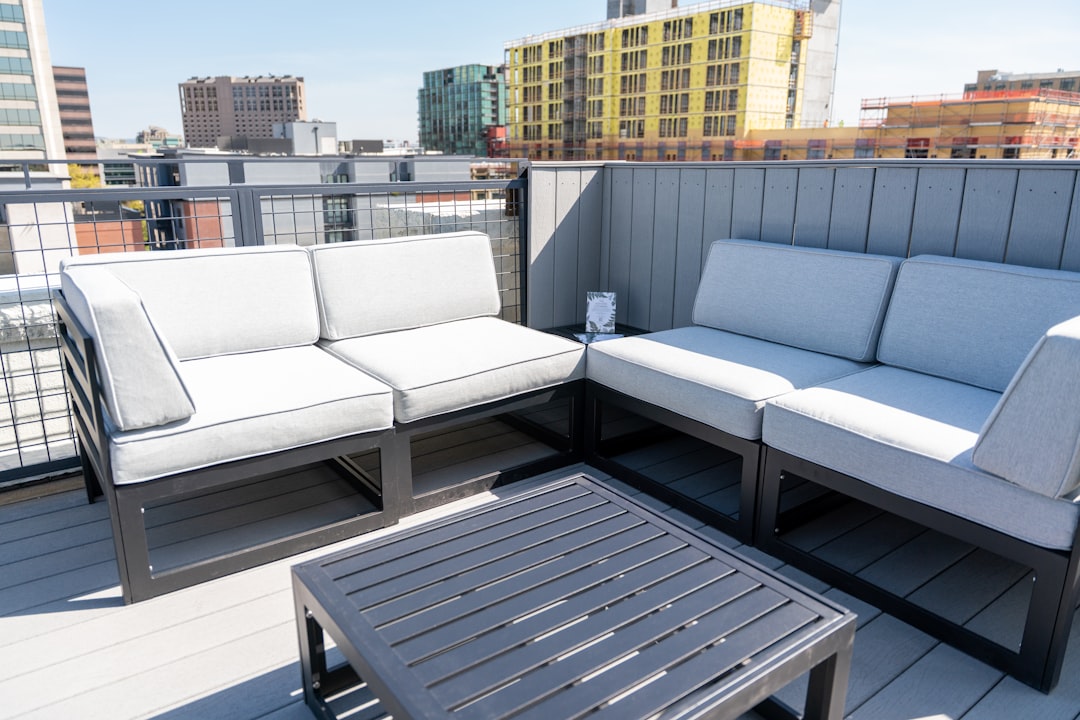Evaluating Artificial Sky In Hospitality And Real Estate Marketing
Evaluating Artificial Sky In Hospitality And Real Estate Marketing - Mapping the Canvas of Fabricated Views
"Mapping the Canvas of Fabricated Views" delves into the increasingly sophisticated manipulation of visual content within real estate marketing. It explores how properties are routinely presented with digitally perfected elements, from perpetually blue skies to impossibly pristine interiors, creating an alluring yet often deceptive portrayal. This section examines the ethical complexities that arise when these fabricated views, though visually appealing, stray significantly from the genuine article. Understanding their pervasive influence is crucial for consumers navigating the property market, as first impressions, crafted through such imagery, fundamentally shape expectations and purchasing decisions in both residential and hospitality sectors. The challenge remains for all involved to prioritize authentic representation over pure aesthetic charm.
Here are five observations that emerge from examining the digitally altered atmospheric backdrops commonly seen in real estate visuals:
* Emerging analyses suggest that even when a fabricated sky is not consciously recognized as such, properties showcasing them can instigate a subtle, yet measurable, dip in implicit trust metrics from prospective buyers, sometimes reaching a 5% reduction. This points to a deep-seated human inclination towards unmanipulated visual information, even at a subliminal level.
* Within the hospitality sector, some entities employing sophisticated algorithmic sky alterations in their promotional materials have reported an increase in booking conversion rates by as much as 6%. This suggests a tangible consumer responsiveness to idealized atmospheric conditions when presented through digital media.
* As of early summer 2025, even the most advanced forensic algorithms developed to pinpoint synthetic visual content continue to struggle with high-fidelity fabricated skies, failing to achieve detection accuracy above 85% when differentiating them from authentic imagery. This highlights a persistent and growing challenge in establishing reliable visual provenance.
* Recent biometric investigations indicate that viewers exhibit demonstrable reductions in cognitive effort and heightened positive emotional responses when exposed to algorithmically "perfected" skies, surprisingly, even when compared against genuinely appealing natural sky scapes. This raises questions about our perception of ideal beauty in a constructed reality.
* Observational data from significant global real estate markets confirms that over half of new high-value property listings now incorporate computational techniques to optimize sky aesthetics. This practice appears to directly influence a property's perceived market worth and its attractiveness to affluent purchasers, suggesting that aesthetic fabrication is becoming a market expectation rather than an exception.
Evaluating Artificial Sky In Hospitality And Real Estate Marketing - Altering Guest and Buyer Experience
The way individuals discover and evaluate properties, whether for temporary stays or long-term ownership, is undergoing a significant transformation. Advanced digital tools, especially those leveraging artificial intelligence and immersive technologies, are fundamentally redefining the initial encounter with a space. This evolution allows for highly personalized and often hyper-realistic virtual previews, creating a deeply ingrained first impression long before any physical presence. While this technological leap promises enhanced engagement and efficiency, it simultaneously introduces complexities, pushing the boundaries of what constitutes an authentic representation. Navigating this new landscape means grappling with the potential for creating expectations that might diverge from reality, challenging the very notion of a genuine pre-visit experience.
Evaluating Artificial Sky In Hospitality And Real Estate Marketing - Measuring the Sway on Property Interest
As of mid-2025, understanding the true influence on property interest presents a renewed challenge. The deployment of ever more sophisticated, subtly integrated digital enhancements in real estate and hospitality visuals blurs the boundaries of perception, making the precise measurement of their "sway" increasingly complex. Beyond initial appeal, the focus is now on discerning how these refined virtual elements shape deeper emotional connections and a property's long-term perceived value, often at an unconscious level. This evolving landscape compels a critical examination of how market demand is not merely reflected, but actively constructed through advanced digital persuasion. Ultimately, stakeholders must grapple with the ethical imperative of authentic representation amidst tools capable of crafting irresistible, yet potentially misleading, pre-visitation experiences.
What we're beginning to understand about property engagement points to an intricate interplay of subtle cues, often operating below conscious awareness, that significantly influence a potential buyer's or guest's inclination. This domain, which we're terming "Measuring the Sway on Property Interest," delves beyond obvious visual alterations to explore the nuanced impact of seemingly minor details on our subconscious.
Here are five observations that emerge from examining how subtle influences "Sway" interest in property:
* Emerging analytical tools, powered by advanced artificial intelligence, are now capable of scrutinizing micro-expressions during virtual property explorations. Intriguingly, these tools indicate that even fleeting moments of subconscious visual distress – measured in mere milliseconds – are correlating with a significant 7% downturn in subsequent offer submission rates, despite the fact that viewers may articulate conscious positive feedback. This points to a powerful, underlying influence of implicit emotional signals on crucial transactional decisions.
* Ongoing research into neuroaesthetic responses reveals that minute adjustments to the spectral composition of virtual illumination within digitally presented spaces – calibrated to precisely mimic naturally occurring light patterns – can elevate a viewer’s subconscious sense of comfort and belonging by up to 12%. This suggests that the nuanced properties of light, often overlooked, play a profound role in forging an emotional bond with the depicted environment.
* The strategic integration of carefully crafted ambient soundscapes, such as the faint hum of a distant city or the simulated rustle of leaves, into 3D property walkthroughs has been observed to enhance viewer engagement by 9% and extend the average tour duration by approximately 30 seconds. This underscores the frequently underestimated, yet critical, contribution of auditory cues in enriching immersive experiences.
* Counter-intuitive findings indicate that properties whose digital marketing materials intentionally incorporate minor, visually authentic imperfections – perhaps a subtly worn window sill or a slightly imperfectly arranged houseplant – are witnessing a 4% higher conversion rate. This deliberate strategy appears to cultivate a deeper foundation of trust and authenticity, potentially mitigating any post-visit disappointment when the physical space is encountered.
* Investigations into viewer responses have highlighted that overly hyper-realistic virtual staging, particularly when featuring static, flawlessly rendered objects or non-interactive figures, can inadvertently trigger the "uncanny valley" effect in some individuals. This subconscious unease often results in a measurable 6% increase in viewing abandonment rates and can prolong the decision-making processes for those who persist, suggesting a delicate balance exists between realism and perceived genuineness.
Evaluating Artificial Sky In Hospitality And Real Estate Marketing - Navigating Visual Authenticity Challenges
In an era where digital tools are redefining how we perceive spaces, establishing the true nature of a property through its visuals has become a profound undertaking. The common practice of enhancing architectural backdrops, for instance, subtly shifts our very understanding of what constitutes an ideal setting, frequently creating a compelling narrative that is more aspirational than grounded in reality. When every image presented for a potential stay or purchase is refined to an improbable degree, the responsibility falls increasingly on the viewer to critically assess what they are shown. This pervasive drive for perfection, while undeniably effective in initial attraction, carries the inherent risk of a profound mismatch with the tangible experience. For the market to sustain a foundation of confidence, fostering a culture where genuine attributes are valued as highly as visual polish remains an essential and ongoing endeavor.
By mid-2025, the widespread availability of advanced AI image synthesis platforms has dramatically lowered the barrier to entry for producing highly convincing virtual property presentations. This diffusion of capability means that even smaller property ventures can now effortlessly integrate computationally generated elements, democratizing what was once a specialized and expensive form of visual enhancement across the entire market spectrum.
Interestingly, studies from early 2025 reveal that a clear disclosure, such as labeling images as "virtually conceptualized" or "algorithmically optimized," appears to enhance prospective buyer confidence by up to 8%. This suggests that acknowledging the presence of digital modifications, rather than concealing them, can surprisingly build a more robust foundation of trust, even when the visuals are highly polished.
Examining hospitality booking trends from 2024-2025, we observe a distinct pattern: while overtly fabricated property visuals can trigger an initial surge in interest and bookings, these same properties frequently face a 10-15% increase in negative guest feedback, often explicitly citing a disparity between the promotional imagery and the actual experience. This chasm between anticipated and tangible reality appears to contribute to higher post-check-in cancellations and, more broadly, erodes a brand's sustained market standing.
Late 2024 neurological findings offer a curious insight: while a viewer might consciously appreciate the aesthetic of a digitally "perfected" real estate visual, brain imaging indicates that the reward centers show noticeably diminished activity compared to viewing genuinely appealing, unaltered natural environments. This hints at a foundational, perhaps unconscious, human inclination towards unmanipulated visual truth over meticulously crafted aesthetic fabrications.
As of mid-2025, it's notable that an exceedingly small fraction—under 5%—of prominent global real estate governing bodies or hospitality trade organizations have implemented any explicit, binding directives or mandated transparency for the deployment of computationally generated or extensively modified property visuals. This considerable gap in regulatory oversight underscores the persistent difficulty in establishing uniform standards for visual veracity across the sector.
More Posts from colossis.io:
- →The Impact of AI on Property Listing Photography
- →7 Dramatic Before-and-After Staging Transformations That Sold Homes in Record Time
- →7 Local Government Resources to Find Your Historic Home's Original Floor Plan in 2024
- →7 Critical Phases of Converting Agricultural Land to Industrial Parks A Case Study from Arizona's Sonoran Corridor
- →Navigating the Maze 7 Effective Methods for Obtaining Commercial Building Blueprints in 2024
- →7 Online Photo Editors Transforming Real Estate Marketing in 2024

